James Shaw II - Timeline
11 October 1887 - 30 October 1949
Birth
James Shaw was born on Tuesday, 11 October 1887 at 9 a.m. to Margaret and James at Ramoan Farm, Glenboig, a baby brother to Joseph, Barbara, Agnes and Andrew. He was their first child to be born there.
He was baptised on Friday, 18 November 1887 by the Rev. Hugh Park, minister at Cumbernauld. Two and a half years later he was joined by brother Andrew and two years later, sister Margaret.
Schooling
Growing up he attended Gartsherrie Academy, Coatbridge, about 3 miles away, and obtained his Merit Certificate on 6 June 1901, aged 13. In addition to Reading, Writing, Arithmetic and English he also studied Nature Knowledge, Geography and British History.
It is quite likely that Robert James Plenderleith, aged 30, living in Gartsherrie, was his teacher of drawing and painting. Robert Plenderleith become art master at Harris Academy, Dundee. (He was the father of Harold Plenderleith, MC FRSE FCS and Robert Waldron Plenderleith FRSE.)
There is some evidence that after leaving Gartsherrie Academy he attended Coatbridge Technical School and Mining College, situated at that time on the corner of Dunbeth Road and Kildonan Street. (At the age of 16 he might have been examined on the subject of Materials of Construction, and no doubt there were others).
Sweden
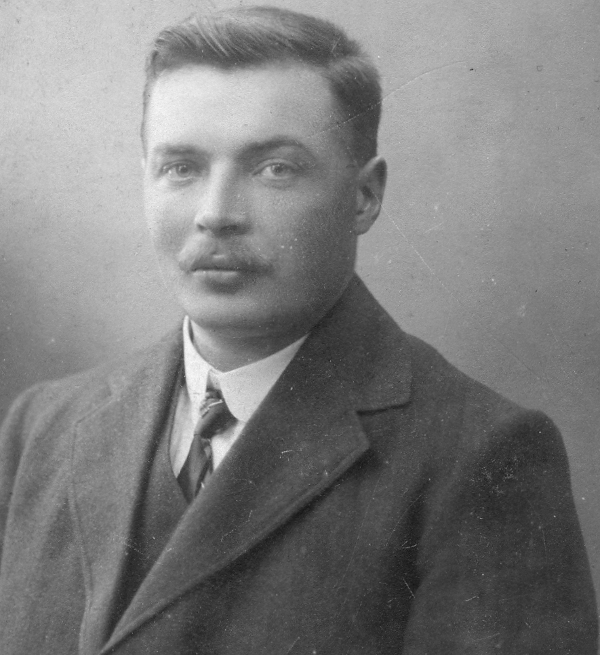
By 1906 James, aged 18, was employed by the Dundee School Board, (following R.J. Plenderleith?), and in June sailed to Gothenberg to join Slöjd (Sloyd) Course No. 108 at Nääs, Sweden, from Tuesday, 12 June 1906 to Monday, 23 July 1906.
Sloyd is a teaching method with an emphasis on getting children to use their hands to make things with basic tools. Two important principles are that only the child may work on their own article and that each new task builds on skills learnt from earlier exercises. (A teacher may demonstrate a technique but must not use the child's workpiece in doing so).
During 1908 there is some evidence that has taking some sort of art classes producing various still-life studies in paint, chalk and pencil dated from 7th July through 24th July. One drawing is labelled course 54s and most carry a Roman 'V' legend.
Dundee Scouts
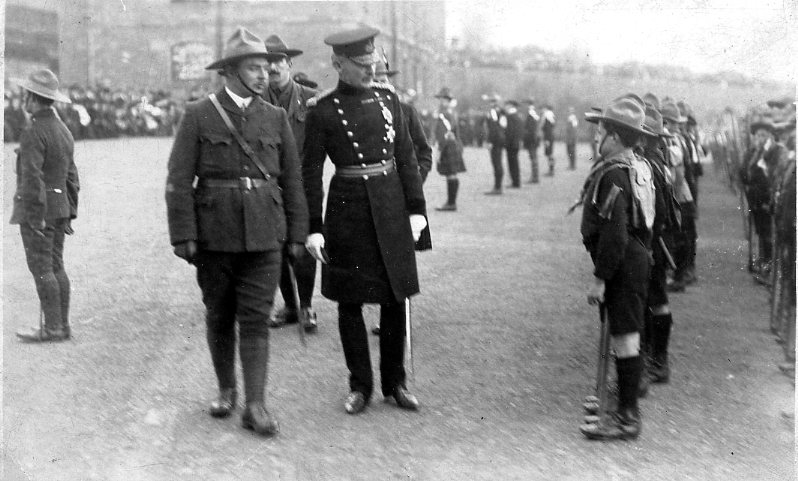
Lieutenant-General Robert Baden-Powell had written a military manual Aids To Scouting that had attracted a wider readership among various youth movements and young boys. This was re-written specifically for this audience as Scouting For Boys in serial form, the first being issued in January 1908.
It has been said that boys in James Shaw's class came to him asking for help in producing scout staffs (poles) and that led to him taking an interest in the scouting movement and to him forming the 1st Dundee Scout Troop. In March 1910 he received his Scout Master's Warrant, signed by Baden-Powell. Presumably he had been carrying out this role in an 'unofficial' capacity for some time previous as only three weeks later, on Monday 21st March 1910, he took charge of 277 scouts on parade before Baden-Powell at Dudhope Castle! At this time he was lodging at 22 Kinloch Street, Dundee, still being there for the 1911 Census.
July 1911 he and his troop took part in a week long, 109 mile trek to the Perthshire highlands and back, passing through Coupar Angus, Dunkeld, Aberfeldy, Amulree, Crieff and Perth. An account written by one of the boys quotes some of the poetic sayings of 'Mr. Shaw', indicating a love of poetry. For his 24th Birthday, (1911), his mother gives him The Works of William Wordsworth.
The Sunday School at Glenboig presents him with a gold watch and chain, suggesting that he returned to Glenboig at weekends to take classes.
Ultimately the watch will be inherited by his son, James, and to be stolen in 1988.
Motorcycling
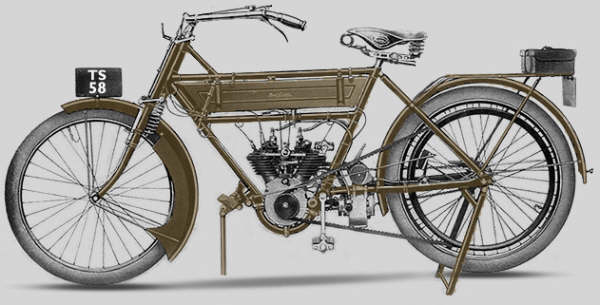
On 5 July 1910 he is registers a 2 h.p. Enfield motorycle, TS 58. He gives his address as 80 Ward Road, Dundee.
Saturday 27 April 1912 proves to be a bad day. The local newspaper reports that he has returned home for the weekend and while enjoying a motor bike ride to Coatbridge he came 'in contact with a farmer's cart' and sustained a broken leg.
A surviving driving licence, number 214, was issued to him on 2nd April 1914 by the Burgh of Dundee. He is still lodging at 22 Kinloch Street.
A few minutes walk away to the east lived Agnes Murrie Kay Scott, Furrier's Machinist, who stays with her parents at 4 Isla Street. She was five years younger. It isn't known when they met but eventually she will become his wife.
Preparing for War
Four months later, on 4 August 1914, the United Kingdom declares war on Germany. Six months later, on 1 February 1915, his cousin Joseph Shaw was killed in France, serving with the Highland Light Infantry. Under the 'Derby Scheme' James was called to attest that he will serve his country if called upon and did so on Tuesday, 23 November 1915. He was allocated to Group 11 and classed as being in employment group 43. On the 30 January 1916, just two months later, notice of his group being called up was announced and he was mobilised on 29 February 1916 at 3 Depot, Royal Garrison Artillery, Fort Brockhurst, Gosport. He was 28. Medical examination showed him to have 'Good' physical development, to be 5' 6¾” (1.70 m) tall, a chest size of 41½” (1.05 m) and with an expansion of 5” (12.7 cm), weighing 188lb (85.5 kg). His eyesight was assessed as 6/9 for both eyes. He had tattoo marks on his left hand and was missing half of his right great toe, (accident or birth defect?). He was given the regimental service number 64996. His occupation was recorded as Teacher, Educational Hand Work, employment class 43, religion as Presbyterian and his next-of-kin as father, James Shaw, 'Auchairn', Townhead Road, Coatbridge. His family doctor was Dr.Moffat.
His mother placed his slippers on a shelf above the door and told her other sons that they were not to touch them, "they were his and were to be kept until he returned".
East Africa
After training he was transferred to the East German Expeditionary Force on 14 July 1916 serving as a telephonist and shipped out via Plymouth on the SS Suffolk to Cape Town and then on to Durban where he was transhipped to Comrie Castle which takes his unit on to Mombassa. Here his section loses its first man to the war when Gunner Ford is lost overboard. Once on shore he encounters the graves of men from the Loyal Lancashire Regiment.
Mombassa is the port of entry into British-held East Africa and from there he took the train inland to Via and then worked his way south into German-held East Africa, (Tanzania)
During this period of one year and five months he kept a small diary with brief entries mostly recording 'good' events, such as receiving and exchanging letters with, his mother, sisters Agnes, Barbara, and Ettie and brother Joe. Back in Dundee 'Aggie' Scott, ex-landlady Mrs McAndrew, and teaching mentor Mr R. Plenderleith.
His leadership skills are recognised and on 25 September 1916 he is promoted to Bombardier. In many ways the East African is as much a war with the country as with an enemy whose main objective is to keep British forces engaged in chasing them around East Africa, while seizing any opportunity to strike at British, French or Portugese targets that might present themselves.
Disease was an ever present danger and like many of his companions James caught malaria. He was sent to hospital in Dar es Salaam, which the British had captured from the Germans. Again, like many others, he recovered but then malaria flared up again and he was sent south to the Maitland miliary hospital in Cape Town before before being returned to the UK on HMAT (His Majesty's Australian Transport) A72 Beltana. He then spent two months in Bermondsey Military Hospital (from 21 March 1918 to 24t May 1918).
Anti-Aircraft Duty
On leaving hospital he was barred from serving in theatres where Malaria wass endemic and instead put on a short-term assignment with HQTG Winchester before being transferred to No. 8 Anti-Aircraft Company based at Plumstead, London. Malaria continues to be a problem and he was categorised as B3 on 18 November 1918. He was de-mobilized at Dover on 6th February 1919 and awarded a weekly pension of six shillings for a period of one year.
Marriage
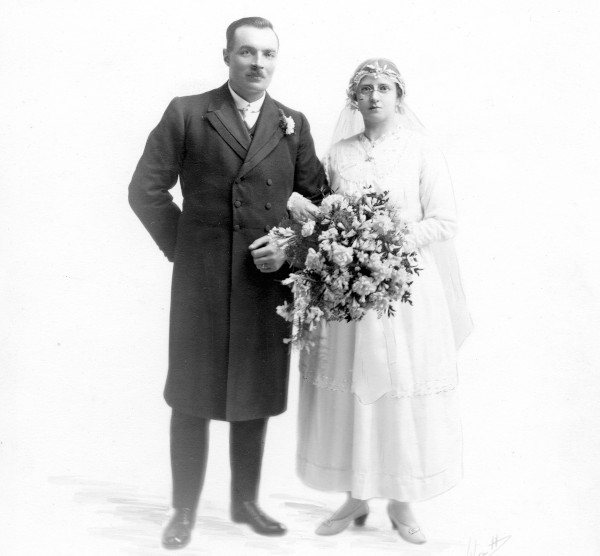
After being discharged he returned to working as a handicrafts teacher in Dundee but now living at 13 Cochrane Street. Two months later he married Agnes Murie Kay Scott, Furrier's Machinist, at Mather's Hotel, Dundee, witnessed by his brother Thomas and Normina Newbigging.
Family
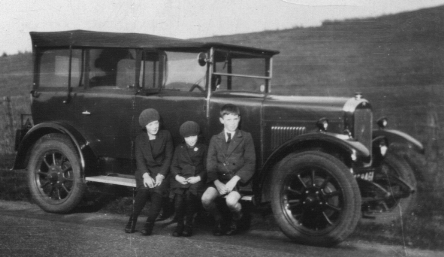
On 21 January 1920 their first child, James, my father, was born. The family was living at 47 Hill Street, Dundee. Two weeks later his mother, Margaret, dies at Gartcosh, on 3 February 1920, she was aged 71.
James took up employment with Midlothian Education Department as a peripateic teacher of handicrafts and the family moved to Marchmont Crescent, Edinburgh. Their first daughter, Agnes, was born here on 31 December 1921. Daughter Margaret arrived four years later on 12 November 1925.
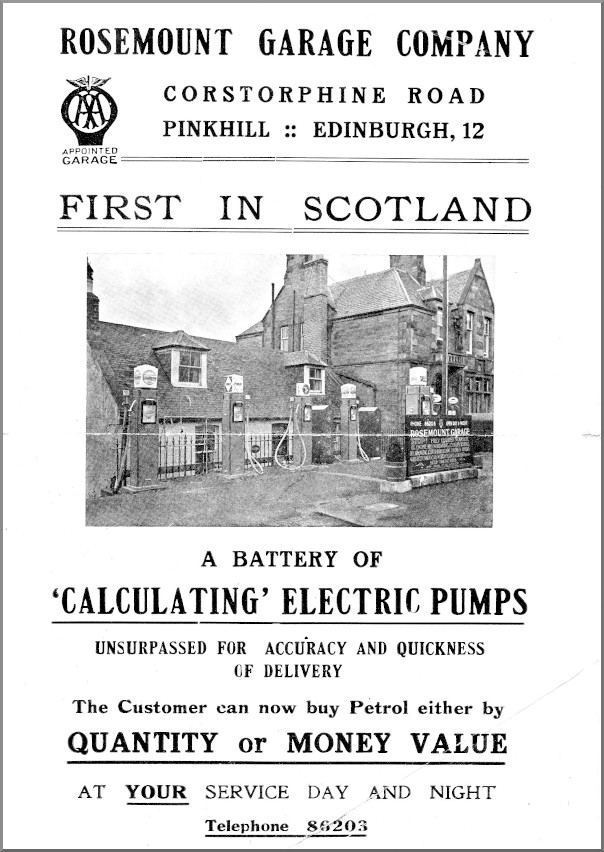
By now the motor bike has been replaced by a Hillman 14, registration number ES 8461. It was garaged at the Rosemount Garage Company on the Corstorphine Road. That meant walking just over three miles to fetch or return from stabling it.
His daughter Margaret remembers accompanying her father in it to Coatbridge where here grandfather and some of her aunts and uncles now live. She was encouraged to sing to her dad on the journey. James had a love of music and played on a piano and organ at home.
The 1930s
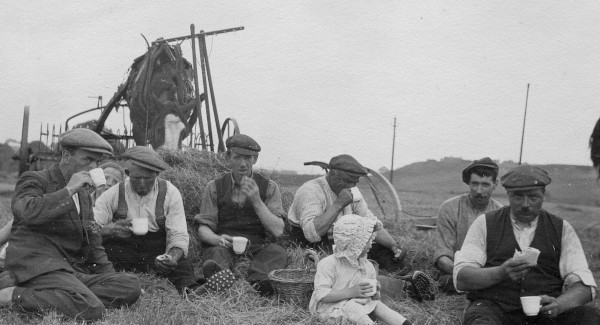
(sitting with daughter Margaret)
His youngest sister, Margaret, dies aged 41 on 4 June 1933. She had suffered from Multiple sclerosis for a long time. A year later his father-in-law, Alex, dies aged 74. Following his death his mother-in-law, Agnes, comes to live with the family. On 23 May 1935 his father, James, dies aged 87. The following year his oldest sister, Barabara, dies on 20 August 1936, aged 57. She had been suffering from breast cancer for 12 years.
During 1937 he exchanges letter with a James Peter of Letham on constructing wooden puzzles.
On 16 August 1939 his mother-in-law, Agnes, dies aged 82 leaving one remaining sibling, Georgiana, the last of 13 children
Second World War
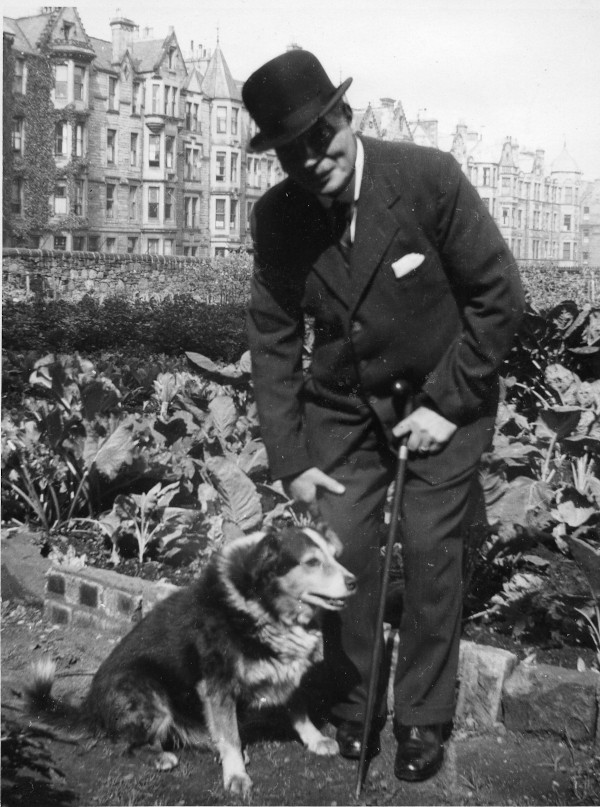
On Sunday, 3rd September 1939 war is declared, now aged nearly 52 he is too old for military service but serves as an Air Raid Precautions warden. (By December 1941 the Second National Service Act it has become compulsory for all men under 60 to do some non-military national service).
He takes on an allotment on the corner of Warrender Park Road and Lauderdale Street, (now part of the grounds of James Gillespie's High School), where he grows vegetables.
He is working as a peripatetic handicrafts teacher for Midlothian School Board, teaching at Gorebridge and Pennycuik schools amongst others. He is also teaching night classes. Many of the students are miners wanting to make useful things and he loves teaching these classes.
At home he has a workshop within the Marchmont Crescent tenement in which he constructs furniture, like folding tables, stools, radio cabinets and a chess table. He plays the piano and the organ, having one of each at home.
Following on the example of his father he is an elder of the church. In his case West St. Giles' Church, Melville Drive, Edinburgh
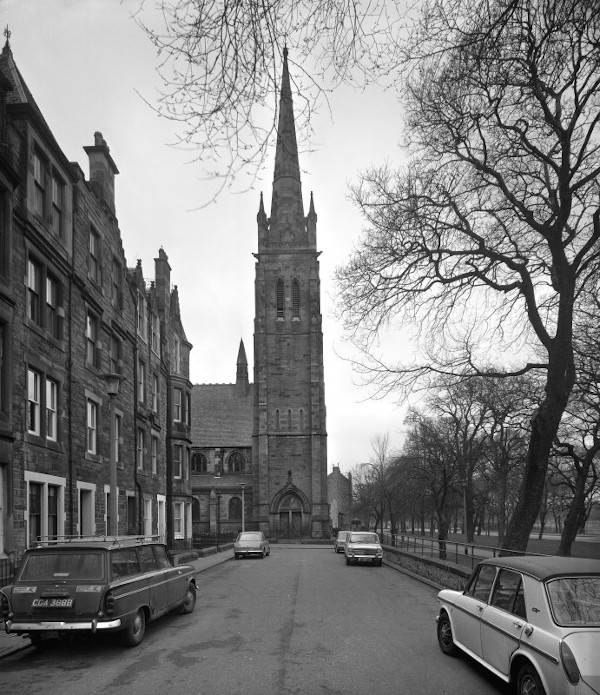
A New Generation
Eldest daughter Agnes, (Bunty) marries William Smith on 1 April 1944. A year later James' first grandson, Gordon is born.
His son James marries Patricia on 20 September 1947. The following year their first son James is born, (the fourth in line to bear the name). Sadly his grandmother, Agnes, doesn't live to see him, dying on 15 April 1948, aged 55.
The following year his third grandson, Norman, is born to daughter Bunty.
Eighteen months after the death of his wife, Agnes, James unexpectedly dies at home on 30 October 1949, aged 62. He is buried alongside his wife in the Grange Cemetery, Edinburgh.